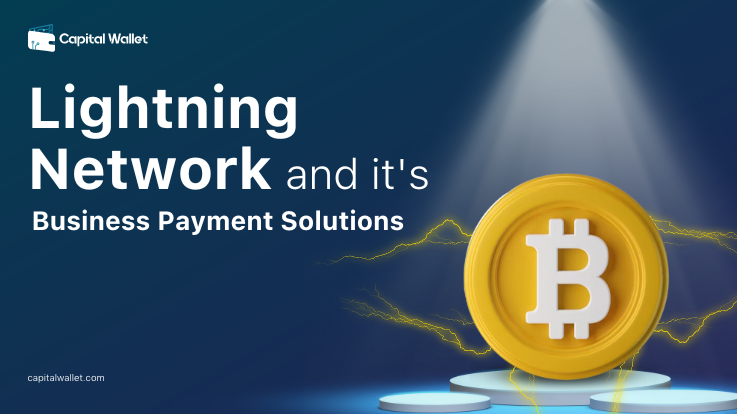
The Lightning Network, is a Layer 2 solution designed for the Bitcoin blockchain. It offers a compelling response to the challenges of scalability, transaction speed, and costs associated with traditional on-chain transactions. As businesses consider integrating cryptocurrencies into their payment systems, the Lightning Network’s technical features make it an attractive choice for optimizing receiving and sending crypto. We are going to delve into the technical foundations of the Lightning Network, examining its core mechanisms, advantages, potential obstacles, and practical use cases for business payments.
Understanding the Lightning Network’s Technical Foundations
The Lightning Network combines bidirectional payment channels, Hashed Time-Lock Contracts (HTLCs), and onion routing to facilitate off-chain transactions. The essential elements include:
- Payment channels: Two parties create a multi-signature wallet and allocate an initial amount of Bitcoin. By adjusting the wallet’s balance sheet, the parties conduct transactions off-chain, which bypasses the need to broadcast them to the main blockchain.
- HTLCs: These contracts ensure the successful completion of payments or their return to the sender. HTLCs impose a time constraint, mandating that the recipient acknowledge the payment within a specified time frame or forfeit the payment.
- Onion routing: This method routes payments through multiple nodes, hiding the sender and recipient from intermediary nodes and enhancing transaction privacy.
Advantages for Businesses handling Payments:
- Speed: Lightning Network transactions are confirmed within milliseconds, increasing efficiency for time-sensitive business processes.
- Scalability: Due to its off-chain nature, the network can accommodate a substantial number of transactions. It is suitable for businesses with high transaction volumes.
- Cost-effectiveness: Lightning Network transactions entail significantly lower fees compared to on-chain transactions, diminishing operational expenses for businesses.
- Privacy: Off-chain transactions are not publicly recorded, offering a degree of privacy for businesses without sacrificing the advantages of a public ledger.
- Interoperability: The protocol facilitates cross-chain atomic swaps, enabling seamless transactions across multiple cryptocurrencies.
Technical Challenges and Considerations
- Liquidity: For high-value transactions, channel capacity and network liquidity might be inadequate. Businesses may need to open multiple channels, utilize third-party liquidity providers, or investigate alternative Layer 2 options.
- Centralization risk: The potential for larger, well-connected nodes to dominate the network may compromise decentralization, increase fees, and introduce censorship risks.
- Security: Although the Lightning Network employs multi-signature wallets and smart contracts to secure transactions, vulnerabilities such as “griefing attacks” and “wormhole attacks” present potential risks.
- Online requirement: To receive payments, users must be online, which may pose an inconvenience for some businesses or necessitate employing watchtowers to monitor channel states.
Real-world Applications for Businesses
- Cross-border payments: By capitalizing on the Lightning Network’s reduced latency and lower fees, businesses can expedite cross-border transactions and minimize reliance on traditional intermediaries such as banks.
- Micropayments: The Lightning Network’s cost-efficiency enables businesses to accept and send micropayments, fostering new revenue models and enhancing customer experiences.
- Supply chain management: Integrating the Lightning Network into supply chain transactions between suppliers and vendors can boost efficiency and improve transparency.
- Payroll and remittances: Companies can harness the Lightning Network’s technical advantages to streamline payroll processing and facilitate remittances for employees.
The Lightning Network’s technical breakthroughs have the potential to revolutionize the way businesses handle payments by offering fast, scalable, and cost-effective solutions for Bitcoin transactions. Although technical challenges and considerations persist, businesses that proactively incorporate the Lightning Network into their operations can access new opportunities and gain a competitive edge. As the adoption of the Lightning Network continues to expand, it could become an integral part of the evolving digital economy, transforming the way businesses approach crypto transactions and driving innovation within the cryptocurrency ecosystem. By staying informed about the technical aspects of the Lightning Network and adapting to the ever-changing landscape, businesses can position themselves at the forefront of crypto for business payments and pave the way for a more interconnected and efficient global economy.
For more information about Capital Wallet, please visit us at: https://capitalwallet.com/

